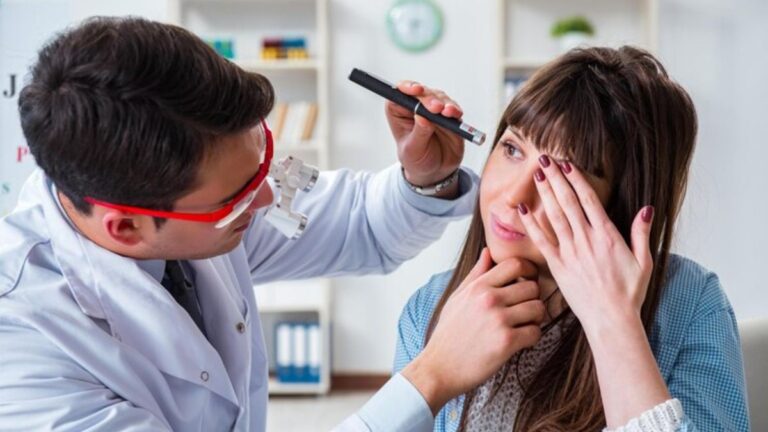Understanding common eye conditions and their treatments is crucial for maintaining optimal vision and eye health. Various eye issues can affect people differently, from mild discomfort to severe impairment. Here’s a look at some prevalent eye conditions and the ways they can be managed.
1. Myopia (Nearsightedness)
Myopia, or nearsightedness, is a condition where distant objects appear blurry while close ones are seen clearly. This occurs when the eyeball is too long or the cornea is too curved, causing light to focus in front of the retina.
Treatment Options:
- Eyeglasses: The most common method to correct myopia involves wearing prescription glasses.
- Contact Lenses: These provide a wider field of vision than glasses and are a popular choice.
- Refractive Surgery: Procedures like LASIK or PRK reshape the cornea to improve vision. Evo Visian ICL in Texas is another option for those who are not candidates for LASIK.
2. Hyperopia (Farsightedness)
Hyperopia, or farsightedness, causes difficulty focusing on close objects, while distant vision may remain clear. This happens when the eye is too short or the cornea has too little curvature, making light focus behind the retina.
Treatment Options:
- Eyeglasses and Contact Lenses: Convex lenses can correct hyperopia by bringing the focal point forward onto the retina.
- Refractive Surgery: Procedures like LASIK can help by reshaping the cornea to enhance focusing ability.
3. Astigmatism
Astigmatism occurs when the cornea or lens has an irregular shape, leading to distorted or blurred vision at all distances. It can often occur alongside myopia or hyperopia.
Treatment Options:
- Eyeglasses and Contact Lenses: Specially designed lenses can correct astigmatism by compensating for the irregular shape of the cornea.
- Refractive Surgery: LASIK or other similar surgeries can correct the shape of the cornea.
4. Presbyopia
Presbyopia is an age-related condition where the eye’s lens loses flexibility, making it difficult to focus on close objects. This typically becomes noticeable after age 40.
Treatment Options:
- Reading Glasses: These are used to magnify close objects.
- Bifocals or Progressive Lenses: These lenses provide multiple focal points, addressing both distance and close vision needs.
- Surgical Options: Procedures like LASIK or conductive keratoplasty can offer relief.
5. Cataracts
Cataracts involve the clouding of the eye’s natural lens, leading to blurred or dim vision. This condition often develops slowly and is commonly associated with aging.
Treatment Options:
- Eyeglasses and Contact Lenses: These may help in the early stages.
- Surgery: Cataract surgery involves replacing the cloudy lens with an artificial one. This is a highly effective treatment.
6. Glaucoma
Glaucoma is a group of eye conditions that damage the optic nerve, often due to increased eye pressure. This can lead to vision loss if not managed properly.
Treatment Options:
- Medication: Prescription eye drops can help lower eye pressure.
- Laser Therapy: Procedures like selective laser trabeculoplasty can improve fluid drainage. For those seeking clarity and precision in vision correction, many consider the best laser eye surgery in London as a premier option.
- Surgery: Surgical options may be necessary for severe cases.
7. Macular Degeneration
Macular degeneration affects the central part of the retina (macula) and can lead to loss of central vision. It is commonly age-related but can also be influenced by genetic and environmental factors.
Treatment Options:
- Lifestyle Changes: Diet and lifestyle adjustments can help manage the condition.
- Medication: Certain medications can slow the progression.
- Laser Therapy: This can help to destroy abnormal blood vessels.
8. Conjunctivitis (Pink Eye)
Conjunctivitis is the inflammation of the conjunctiva, the thin tissue covering the eye and inner eyelid. It can be caused by infections, allergies, or irritants.
Treatment Options:
- Antibiotics: For bacterial conjunctivitis, antibiotic drops or ointments are used.
- Antihistamines: These can treat allergic conjunctivitis.
- Avoid Irritants: For irritant-induced conjunctivitis, avoiding the offending substance is crucial.
9. Dry Eye Syndrome
Dry eye syndrome occurs when the eyes do not produce enough tears or the tears evaporate too quickly. This can cause discomfort and potential vision problems.
Treatment Options:
- Artificial Tears: These can provide temporary relief.
- Medication: Prescription drops may help increase tear production.
- Punctal Plugs: These can help keep tears on the eye longer.
Maintaining eye health involves regular check-ups with an eye care professional. Early detection and treatment of these conditions can significantly enhance quality of life and prevent further complications. If you’re considering advanced treatments like Evo Visian ICL in Texas, consult with an ophthalmologist to explore the best options for your needs.
